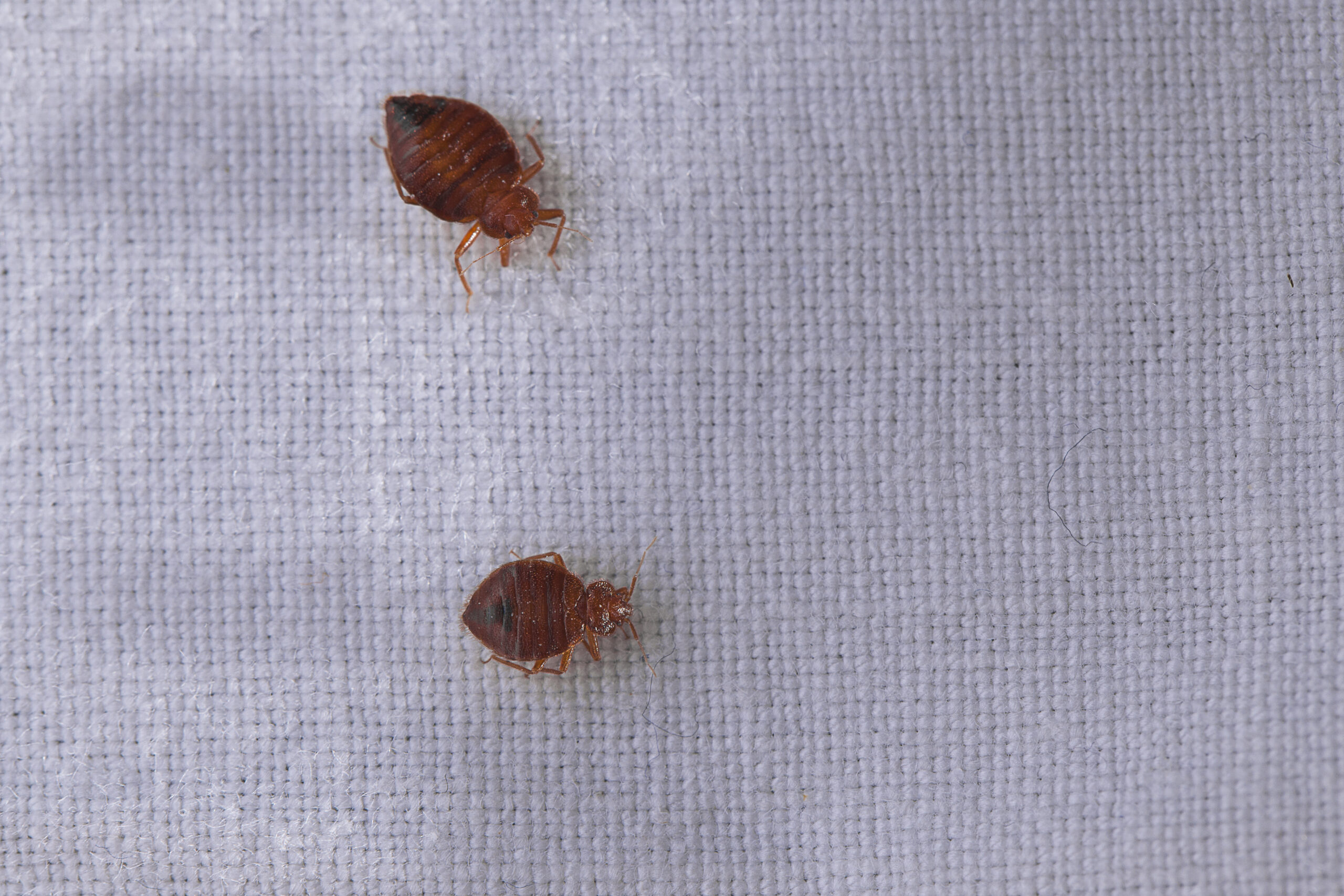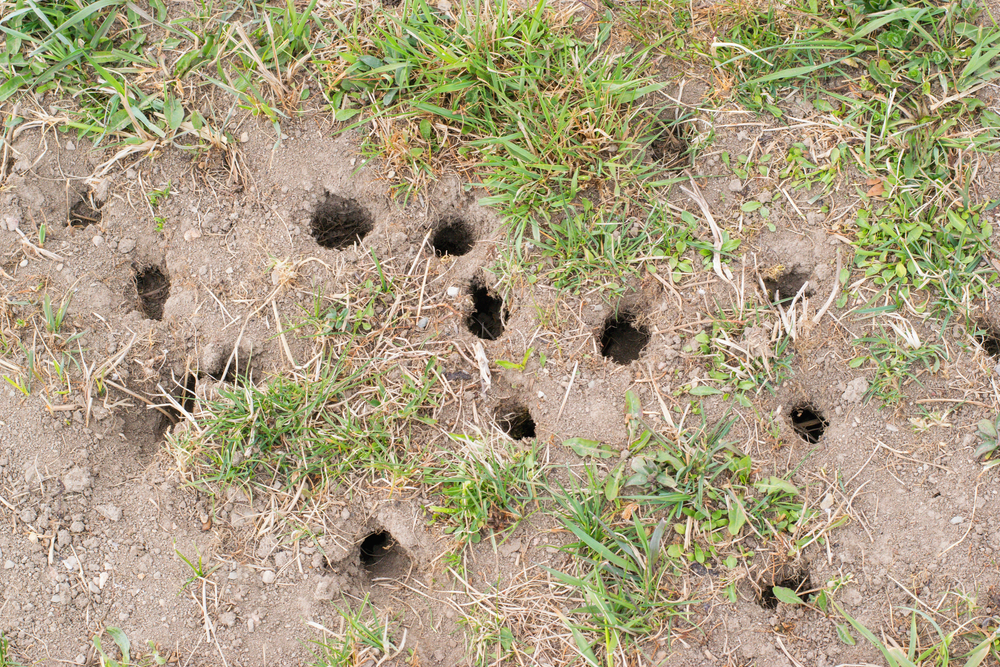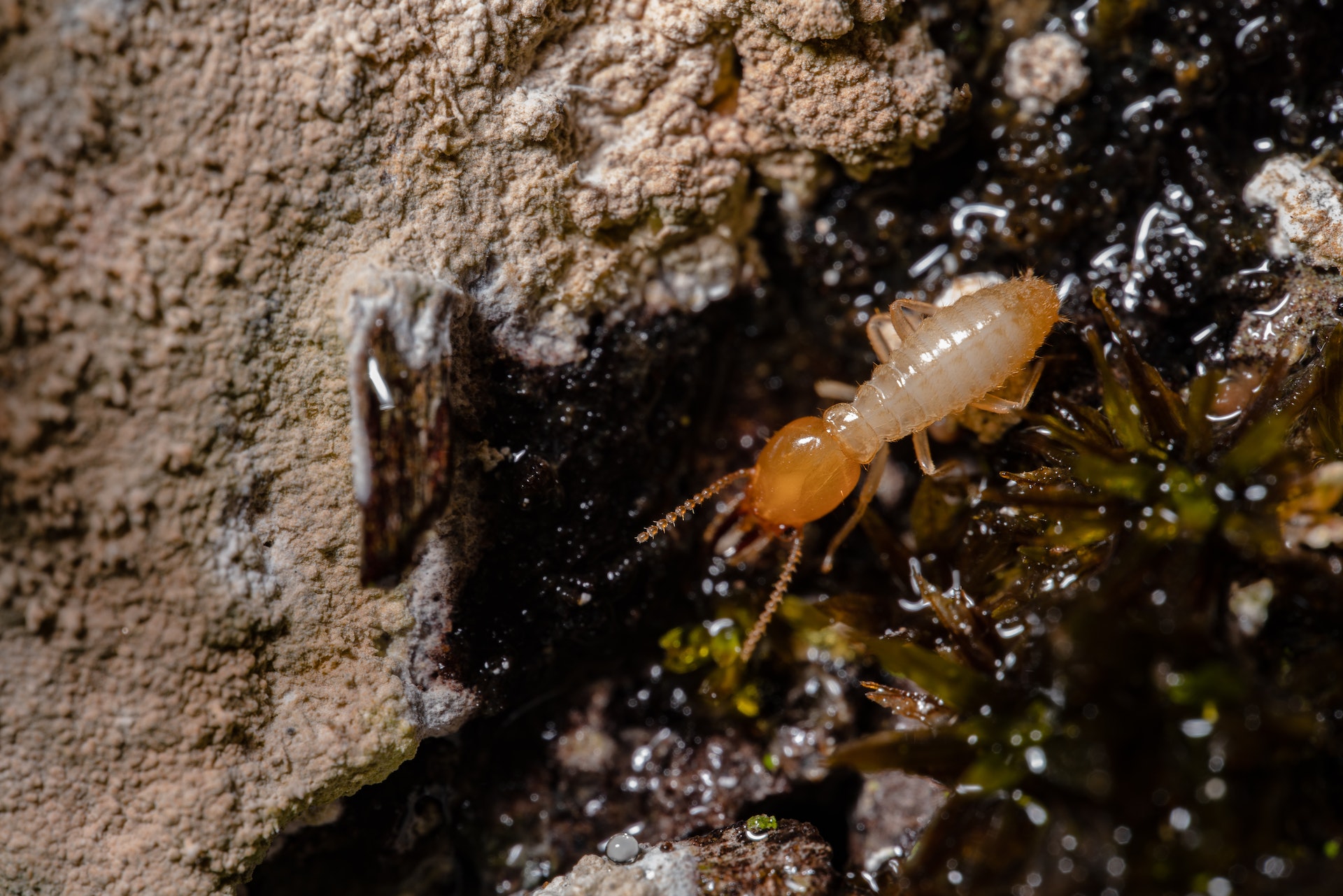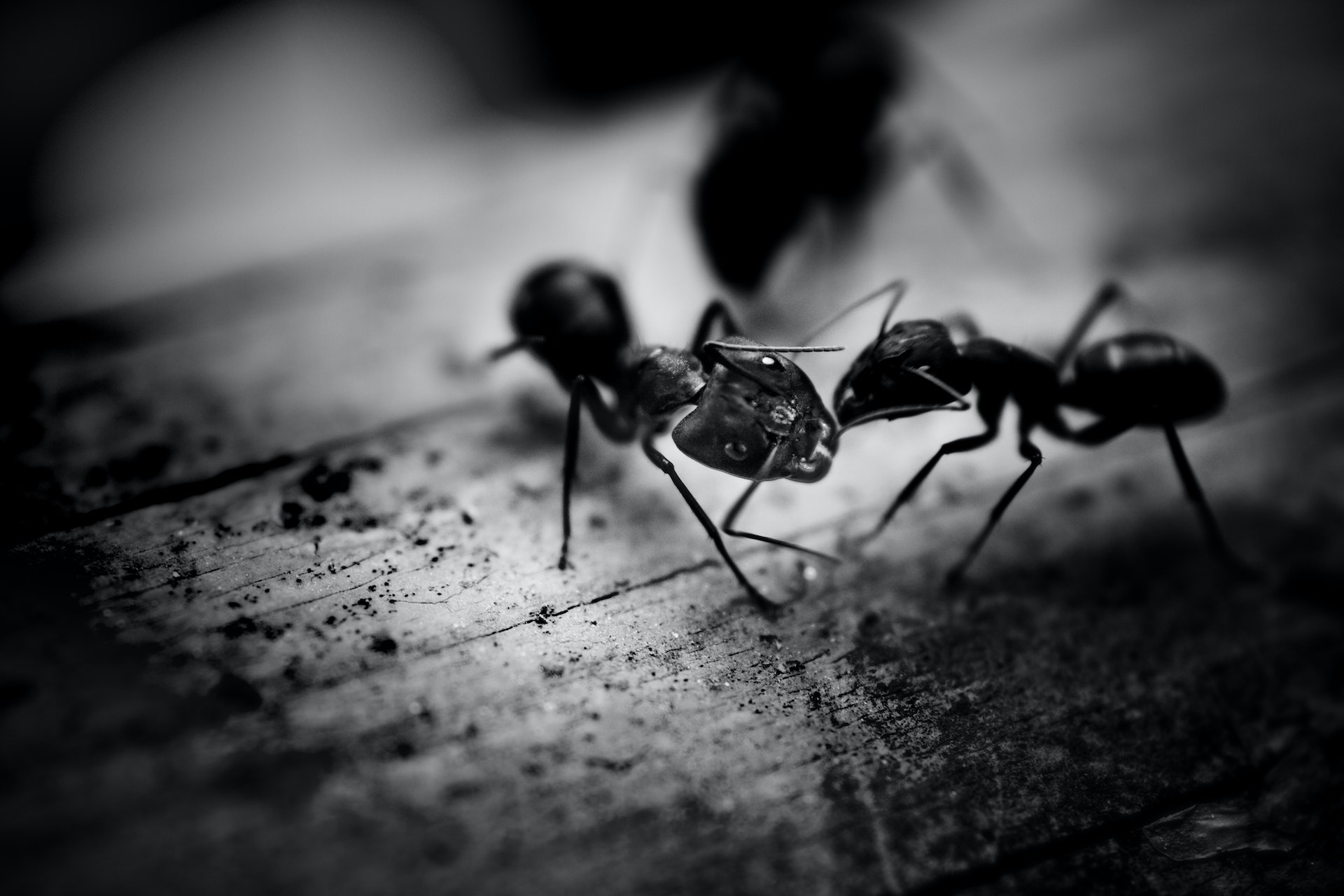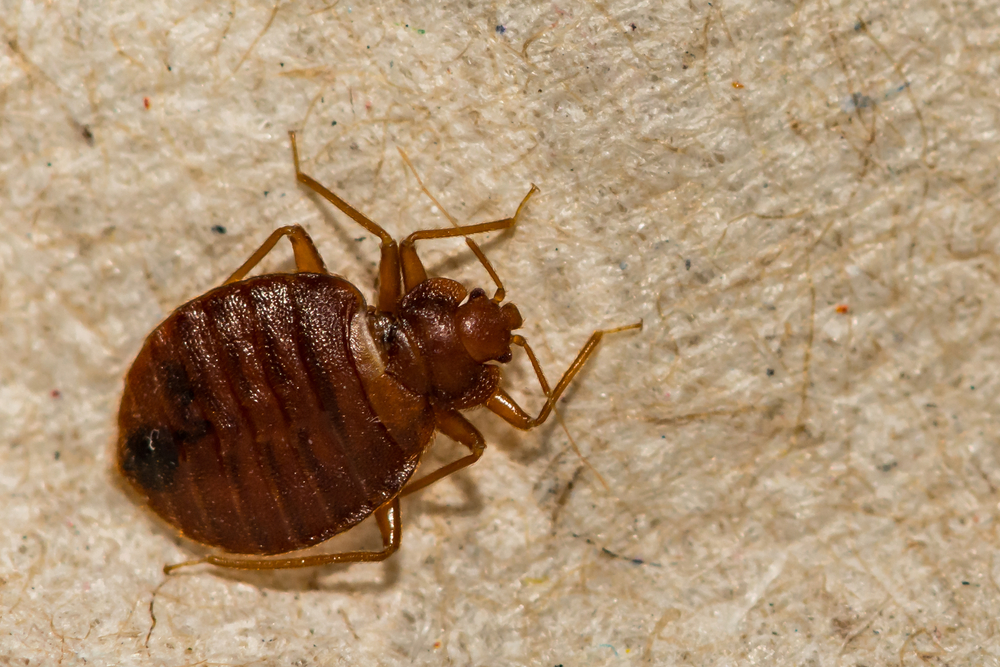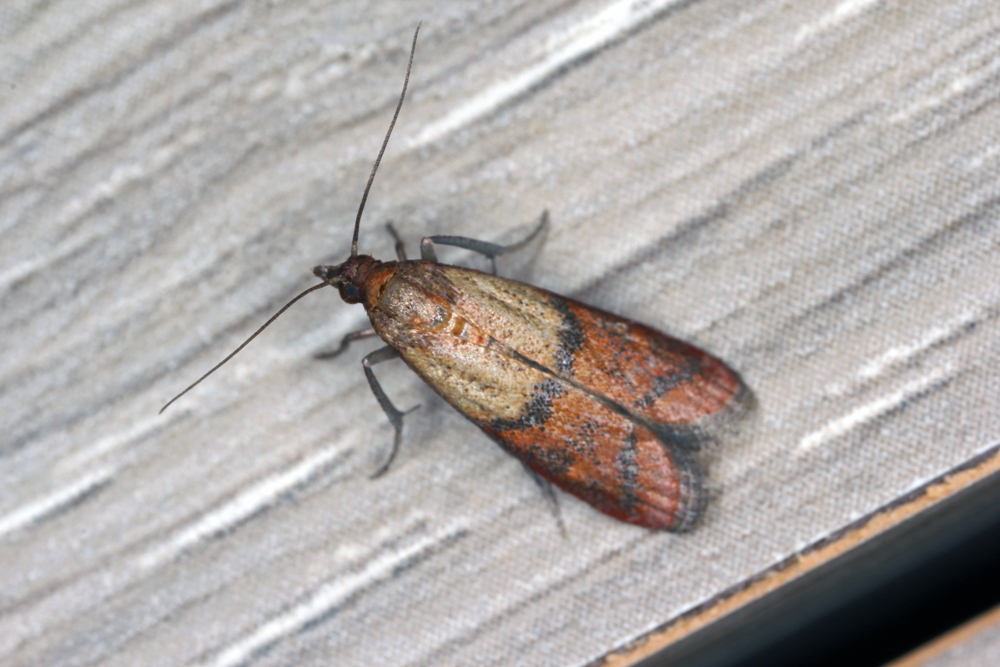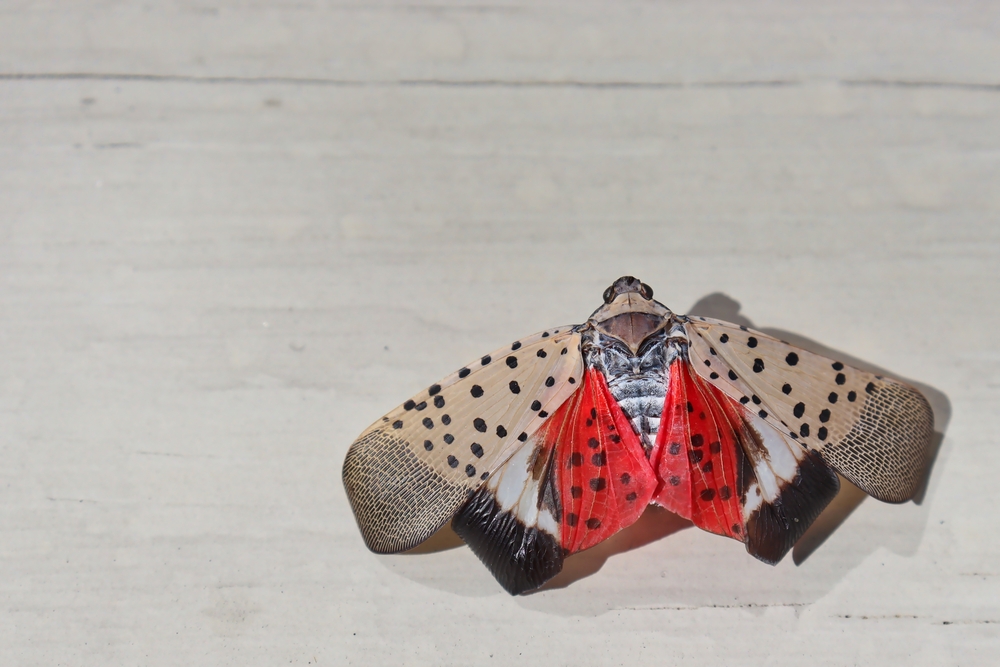Bed Bugs: A Guide
No other pest strikes fear into the heart of a homeowner more than a bed bug. Bed bugs are notoriously difficult to get rid of, and no home remedy you find on the internet or over-the-counter product will rid you of the problem — you must consult a pest management professional. Here is everything you need to know about these pests.
What Are Bed Bugs?
Bed bugs are small brown insects. Adult bed bugs are similar in shape and size to an apple seed. Bed bugs are usually flat unless they have recently fed. After eating, bed bugs become engorged with blood. Nymphs, or baby bed bugs, are smaller and colorless. Bed bugs cannot fly, but they can move fast. Bed bugs can go months without eating.
Where Are Bed Bugs Found?
People find bed bugs throughout the world, in all kinds of living conditions. Bed bugs are not a result of poor hygiene or dirty homes, and they are no respecter of status or wealth.
Bed bugs hang out wherever their human hosts gather. As they feed primarily at night, they are usually found in bedrooms. They may live in the box spring or hide in the crevices of your baseboards or behind outlets.
Why Are Bed Bug Infestations on the Rise?
Bed bugs were virtually eradicated until late in the 20th century. Experts aren't entirely certain why bed bugs have returned but surmise increased global travel and increasing resistance to the chemicals formerly used to treat them are the primary causes.
A single adult female can lay many eggs during the course of her lifetime. The more often she is able to feed, the more eggs she can produce. This can create a bed bug infestation that quickly spirals out of control.
How Do Bed Bugs Affect Humans?
When you lay dormant in your bed, bed bugs detect your presence by the carbon dioxide you exhale and your body heat. When they find you, they will bite you with their piercing, needle-like mouth, injecting you with chemicals that numb the area, so you don't feel the pain and make your blood flow freely rather than clot.
It is not uncommon for a bed bug to repeatedly bite you rather than feed in just one spot. These bites normally follow an imaginary line. They will feed for several minutes before going back to their hiding place.
While bed bugs are not believed to transmit disease as mosquitoes or ticks do, the chemicals they inject when they bite can stimulate your immune system, which leaves you with itchy, raised welts.
How Do You Know You Have Bed Bugs?
In addition to the telltale bite trails, you may see tiny blood spots on your bed. You may also see a reddish-colored dust from their feces in the seams of your mattress. You may also see the bed bugs themselves. Eggs and nymphs are very difficult to see. In homes with high infestations, you may detect a musty smell when you walk into your bedroom.
How Are Bed Bugs Treated?
Exterminators will thoroughly inspect your home to determine the extent of the infestation. Once a pest control expert has a clear understanding of the extent of the problem, they will come up with a treatment plan that's right for you. This may include the use of pesticides as well as heat treatments to completely eradicate their presence in your home.
How Can You Prevent Bed Bugs?
While no one is immune from bed bugs, you can take steps to reduce their transmission. Do not buy used furniture, especially mattresses and upholstered furniture. When staying in hotels, consider keeping your luggage tightly sealed in a plastic bag. Upon returning home, vacuum your luggage and keep it in the garage.
Pest management professionals understand the grief bed bugs can cause homeowners. If you fear you have bed bugs, contact us today so we can begin immediate treatment and eradication.
Understanding and Identifying Voles
What are voles? Even though they have a mouse-like appearance, voles are a different type of outdoor pest. If you think your yard has a vole invasion, take a look at the top questions homeowners have about these rodents.
Are Voles, Moles, and Mice the Same Animal?
Voles are rodents. While one can easily confuse voles with other rodents like mice and moles, these backyard pests aren’t the same animal. The top differences between voles and other common household rodents include:
- Size. Adult voles are between five and seven inches long. Mice and moles are typically smaller than the full-grown adult vole.
- Ears. Voles and mice have visible external ears, while moles don’t.
- Tail length. Even though mice and voles both have the tails, the vole’s tail is much shorter than what you’d find on a mouse.
- Snout. The vole has a rounded, blunt snout. In comparison, moles have longer snouts.
Along with their appearance, voles often have different habits than moles and mice. While you may find mice in your home (nesting or searching for food), voles typically stay outdoors. But this doesn’t mean they feast on the same buffet of bugs moles enjoy. Instead, voles are vegetarians that prefer your yard’s plants over grubs and other bugs.
Where Do Voles Live?
You already know voles are in your yard. But where do these rodents nest? Like the moles, the vole also lives underground. According to the Penn State Extension, the vole’s home range is typically under one-quarter acre. If your home is part of this rodent’s range, the vole in your yard:
- Digs tunnels. The vole’s underground home includes a series of tunnels along with runways on the surface.
- Creates a burrow. Tunnels are necessary to reach the vole’s underground home. This rodent invader builds a burrow under your yard. Each burrow can contain multiple adult voles and their offspring.
- Builds a nest. Along with the underground burrow, voles also build nests of dry grass. These nests are typically between six and eight inches in size, according to the Penn State Extension.
If you’re not sure whether the holes in your yard belong to voles, moles, or another backyard pest, contact a professional. The pest control contractor can inspect your yard, look for signs of voles, and help you to take the next steps.
What Types of Damage Do Voles Cause?
Why do you need to remove voles from your yard? Even though the rodents aren’t likely to enter your home (like mice do) and are more content to live out of the way and underground, voles can still cause residential damage. The primary types of damage a vole can cause include:
- Bark destruction. Voles gnaw on the bark of trees. Whether you have saplings or older trees, the vole can cause serious damage.
- Root destruction. Bark isn’t the only part of the tree voles gnaw on. These rodents also eat underground roots.
- Lawn issues. Along with tree bark, voles may also eat grass. This habit can destroy your lawn or cause bare spots.
- Plant problems. The vegetarian rodent also feasts on some types of backyard greenery — especially if you grow fruits or vegetables.
Vole damage typically remains in the outdoor area. These pests won’t destroy or your home or pose a major threat to your family. While the vole can carry diseases such as tularemia, they prefer to stay away from people. If you do see voles in your yard, don’t approach the animals. Vole removal is best left to the pest control professional.
Does your yard have a vole infestation?
Contact Environmental Services Pest Control, LLC for more information.
Taking Termites Seriously: From Identification to Elimination
A termite infestation can be a costly problem. Learn about termites and what to do if they are trying to eat you out of house and home.
Termite Identification
What is a termite? In simple terms, a termite is a subterranean insect that lives in colonies and feeds on wood. Not a problem if the wood is a decaying tree in the woods, but quite a problem if the wood is your deck or house frame.
Termite colonies contain a queen, workers, soldiers, and swarmers. The workers are pale and resemble a cross between an ant and a grub. They are hard to spot and are usually only discovered when damaged wood is broken apart. The winged swarmers shed their wings in the spring, and these discarded wings are often the first sign that termites are present.
In Pennsylvania, the most common and most destructive termite is the eastern subterranean termite. Each colony can have several million termites. In areas of high termite density, 1 in 5 homes can be affected, causing millions of dollars of damage each year.
These termites feed on the soft sections of your timber, leaving the harder material untouched. Often, affected timbers become almost hollow shells, packed only with dirt and termite channels. These hollow timbers become warm and moist — the perfect environment for termites but structurally devastating to your home.
Termite Examination
If termites made your home a food source, you will be able to find telltale signs beyond the appearance of living termites or their discarded wings. Examine several key areas of your home to spot an infestation.
Where to Look
In Pennsylvania, the most common places for termite infestations are basements and cellars, or anywhere that is moist. Termites will make their way into studs, joists, and subfloors connected to these damp basement areas.
Any wood posts, decks, and beams that touch bare earth or concrete subfloors are also vulnerable to termites, as are window frames.
The wood around chimneys, furnace ducts, and hot water heaters attract termites as well, as they seek warmth during the winter months.
What to Look for
Termite-damaged wood will be soft and porous. A traditional tool to locate termite damage is a screwdriver. Poke the screwdriver at your wood. If it probes into the wood, you have a problem. You might even uncover some worker termites in the process.
Termites are not the sole cause of soft wood. Mold or dry rot may be to blame. Examine your space for other clues of an infestation. If you do not uncover any termites, look for signs of passages and termite tubes. These will look like hollowed-out pipes or carved lines in the wood. You may see the entrance and exit paths termites carve into your timbers.
Termite Termination
Termites will not destroy your home overnight but will gradually eat away at your house for years, even decades, if not eliminated. If you have found evidence of termites in your home, call a licensed termite control professional. They will eliminate those termites with one of two basic treatment options.
Liquid Pesticides
Liquid pesticides form a barrier around your home, as chemicals are applied in a perimeter at your foundation. Termites pass through this chemical fence on their way to and from their colony. Hopefully, they carry this poison back to their nest.
Bait Traps
Bait traps are positioned in areas of termite traffic. The termites are attracted to the bait and carry it back to feed their young. The bait is laced with chemicals that stop termite young from maturing into workers. This will kill the colony over time.
Work with your certified termite control professional to choose the termite control technique that is best for you and your home.
Do not panic if you find termites, but do act right away to prevent further damage. Contact Environmental Services Pest Control, LLC, today! We are FHA-VA termite certified for your termite control needs.
Everything You Need to Know About Fleas and Pets
Fleas are tiny nuisances that can bite your pets and family. They feast on your dog or cat’s blood for survival. They don’t even need a host to survive up to two weeks in your home. A pest control company can stop a flea problem, no matter the severity, and sometimes, even before a major infestation occurs. However, you should understand what fleas are and why they’re a concern.
Appearance
Generally, a flea is between one to 2.5 mm in length, although their size varies slightly based on the species. Usually, they’re yellow to dark brown. All species have six legs, with the hind legs being the strongest, so they can jump.
Fleas have a flat shape, almost like someone stepped on them. They have a head, abdomen, and thorax, just like many other insects. The full fleas have an abdomen that appears plumper and may look paler than the rest of their body.
Lifespan
A single flea may survive between a few weeks to a few months, depending on the environment. Generally, fleas thrive well in warm, humid conditions, which makes summer an ideal time for these pests to invade your home and reproduce.
Mobility
Fleas are wingless. Instead of flying, they maneuver around by jumping. Despite their small stature of only 1/6 to 1/8 inches long, these parasites can leap up to seven inches into the air but travel less than one-inch in distance per leap.
Life Cycle
One female may lay up to 40 eggs in a single day and can lay this amount every day once she reaches sexual maturity. The females require the blood from your pet for the nutrients necessary to reproduce.
Egg Stage
The eggs are white and smaller than a single grain of sand. The female tends to lay them in clusters, typically around 20 per bunch. Unfortunately, these eggs may fall from your pet as he or she moves, and the eggs end up throughout your home.
Within two days to two weeks, an egg is ready to hatch if the conditions are right. In general, the eggs hatch sooner when it’s warm and humid.
Larvae and Pupae
Once they hatch, they become larvae. The larvae are blind. They don’t host off your pet at this stage. Instead, they survive by consuming the following:
- Flea eggshells
- Skin flakes
- Flea feces
- Other debris
During the larval stage, they prefer cool, damp places. The larval stage tends to last between five and twenty days before they become pupae. During the pupae phase, they’re looking for a host to feed from, so they can become an adult.
Adult
Adulthood is when a flea reaches sexual maturity. In around 24 hours after a female’s first meal of blood, she can start laying eggs to continue the lifecycle. An adult can live between two to three months, and the female can continue to reproduce during this time as long as she continues to eat. Adult fleas require a host to survive their full lifespan, though.
Danger of Fleas to Your Pet
First and foremost, your pet may have an allergic reaction to the flea’s saliva. The reaction can cause your pet to scratch frequently, and then an infection can set in to the wounds.
The most serious problem for your pet that stems from a flea infestation is a tapeworm. Tapeworms are another parasite, but they host on fleas. If your pet should happen to eat a flea, he or she can ingest the tapeworm inside of the flea. This parasite then grows inside of your pet and robs him or her of nutrition.
Fleas are harmful to your pet, and their bites can irritate you. You may remove fleas from your pet by bathing your pet with a flea shampoo or taking his or her to the vet. However, you still need to have your home treat to fully remove the problem.
Contact Environmental Services Pest Control, LLC, serving Lansdale, PA and the nearby region, if you suspect you have fleas.
Types of Ants That Bite Humans
No matter what type of ants you deal with, the insect is often a nuisance in your home. You add another layer to the problem when you encounter an ant species that bites. Bites could cause painful reactions. Learn about different ants that will bite human skin.
Fire Ants
One of the more painful ant bites you will encounter is from the fire ant. The vividly red ant will not just attack humans, but whole colonies have been known to swarm on humans to defend nest areas. Fire ants are typically found outside the home, but various foods, and crumbs left by homeowners will attract the insect indoors.
Not only do fire ants bite, but they sting. And unlike most bees which only sting once, a fire ant may sting multiple times in a relentless attack. Both the bites and stings cause a burning sensation in the skin, which has led to the fire ant name for the insect. You may notice a collection of red spots or blisters form after fire ant bite.
A pest control worker will help protect the barrier of your home and remove any visible colonies from your property. Areas like wood piles and large garden rocks are prone to fire ant nests, so keep an eye out for colonies in those areas.
Field Ants
Fire ants are commonly confused with field ants because a wide arrange of field ants have red bodies. The key difference between the two is the lack of a sting in the field ant. The fire ant is also known to act more aggressive while a field ant will only bite when provoked.
A field ant bite will feel like a pinch on the skin. Avoid the colony areas or have a pest control worker take care of your property so you do not have to worry about the insect. Along with humans, field ants will bite animals like cats and dogs. If your pet frequently goes outside, a treatment will help eliminate the insect and keep your pets protected.
Carpenter Ants
The presence of carpenter ants on your property adds more worries than just a bite. The ants dig through wood much like termites and could chew the inside of walls, nest between wood, and cause major structural damage on a home.
While other ant bites feel like a pinch, the carpenter ant is much larger, and the bite pain could linger for several minutes after you’ve been bit. The removal of carpenter ants is essential because of the damage the insect causes. Once the insects are inside the home, bites could occur in any room as the ants make their way around to different areas where wood is located.
A pest control company has experience eliminating the ant from your property and protecting your wooden structures from damage.
Crazy Ants
If you spot ants on your property moving erratically around, you are likely encountering a crazy ant colony. Crazy ants are smaller in size than a typical house ant, but will bite as a defensive mechanism. The small bite may feel like a slight itch as an ant crawls on your skin.
The main goal of a crazy ant is to not bite humans but to look for any little crumb or spot of food lying around. Along with keeping your house clean, a pest control company will provide a safe treatment barrier around the home to prevent the ants from gaining access inside. The ants could also return each season, so annual treatments will help keep the biting insects away from your home.
Help eliminate biting ants and other dangerous pests with our services at Environmental Services Pest Control, LLC. We will use our years of experience to identify specific ant species and signs of other insects in or around your home.
What Pennsylvania Homeowners Need to Know About Deer Ticks
Do you have deer ticks in your yard? The black-legged tick, Ixodes scapularis, is more commonly known as the deer tick. If you think this common Pennsylvania pest is a problem for your family, take a look at what you need to know about the deer tick, as well as tick safety and extermination.
What Are Deer Ticks?
Deer, or black-legged, ticks are arachnids that live in the northeastern, mid-Atlantic, and northern central areas of the United States. To identify these backyard invaders, look for:
- Color. Deer ticks are orange-brownish or reddish-brown in color and have dark legs.
- Legs. These arachnids have eight legs. If the bug in your backyard has less (or more), it isn’t a deer tick.
- Shape. The deer tick has a flat oval shape.
- Size. Female deer ticks are about one-eighth of an inch long. The males are smaller, with an adult size of 1/16-inch.
Even though the deer tick has its own characteristic appearance, other pests may mimic the arachnids’ look. If you’re not sure whether the pests in your yard are ticks, beetles, or another bug, contact a professional for an inspection and evaluation.
Why Is Deer Tick Extermination Necessary?
If the ticks stay outside, do you really need to eliminate them? One or two ticks probably aren’t a problem. But if you have a steady invasion, these arachnid invaders could put you or your family at risk. Deer ticks are known to transmit Lyme disease to humans. The transmission cycle includes:
- Nymphs. According to the U.S. Centers for Disease Control and Prevention (CDC), most human infections occur due to bites from immature ticks — also known as nymphs. While nymphs are more likely to go unnoticed, an adult can also transmit the disease.
- Questing. Unlike fleas and flies, ticks can’t jump or fly onto your body. The deer tick waits on grass, shrubs, or other plant-life until a suitable host passes by. This process, known as questing, allows the tick to hitchhike onto a human without most people noticing the invader.
Attachment. The CDC notes that it typically takes 36 to 48 hours for the deer tick to transmit the Lyme disease bacteria (Borrelia burgdorferi) to a human. This means the tick must stay on your body long enough to give you the disease. - Symptoms. Symptoms can start from three to 30 days after the bite, according to the CDC. These include fever, chills, fatigue, headache, muscle aches, joint aches, or swollen lymph nodes. You may also see a bull’s-eye-shaped rash on your skin.
While not every deer tick bite will result in Lyme disease infection, the possibility of transmission means you need to take these invaders seriously. Along with protective measures (long pants, long shirts, and insect repellent sprays), a pest control professional can reduce the risks.
How Should You Eliminate Deer Ticks?
Deer tick extermination is not a do-it-yourself job. Avoid commercially available products or homemade treatments. This can pose safety risks to you and the wildlife in your yard. A DIY extermination job may also leave ticks behind, which opens your home to a re-infestation.
- When you hire a professional to exterminate the deer ticks in your yard, ask:
- How much experience do you have? The exterminator should have specialized experience handling deer tick infestations.
- How do you plan to treat the area? Learn more about the type of treatment, how it affects your yard (including wildlife and plant life), and the impact it could have on your family.
- What types of maintenance services do you offer? The ticks could come back. Prevent a re-infestation with routine pest prevention services.
The pest control professional can also help you to tick-proof your home. This may include recommendations for preventative and protective measures or the extermination of tick-carrying pests, such as raccoons or squirrels.
Is your yard a haven for deer ticks? Contact Environmental Services Pest Control for more information.
What You Need to Know About Raccoons
You can often observe and appreciate some types of wildlife, but the raccoon is one wild animal that has no place in your home’s outdoor areas. Several dangers are associated with raccoons, and homeowners should take steps to prevent raccoons from making your home their home.
Keep reading to know more about the raccoon, including tips for discouraging them from entering your yard and the things to do if a raccoon already shares your residence.
Raccoons and What the Associated Dangers Are
Even though some people think raccoons are cute, you need to take steps to prevent them from frequenting your yard.
Rabies
Raccoons are one of the primary rabies carriers in the United States. They pose a significant danger to unvaccinated pets and humans. Unvaccinated pets will need quarantine and possible euthanasia if they show signs of rabies. Vaccinated pets who encounter raccoons need to receive a rabies booster and may still be subject to quarantine.
Droppings
Raccoon droppings are another potential danger to your family. Roundworms live in raccoon intestines. When the raccoon uses the bathroom, the eggs from these roundworms are in their droppings. If a human comes into contact with raccoon droppings, they may inhale or ingest the eggs and suffer a roundworm infection.
Young children are particularly at risk due to their natural curiosity and their propensity to put unfamiliar things in their mouths. Pets and livestock are also at risk of acquiring a roundworm infection. In some cases, roundworm infections lead to permanent brain, heart, and eye damage.
Raccoons and How to Deter Them
You can do a few things to make your yard an unappealing home for nearby raccoons. First, start by clearing any brush or overgrown vegetation from your property. Dead branches, large bushes, and unkempt shrubbery are ideal spots for raccoons to build a den.
Then, invest in a cover for your child’s sandbox. Raccoons like to lay their droppings in the same area, and a raccoon may view an uncovered sandbox as a great place to turn into their latrine.
Repair any potential entrances to your home or storage buildings. Promptly fix any holes in your walls, roof, foundation, or vents. You should also install skirting around your deck to prevent raccoons from living in this secluded area.
You should immediately remove any potential food sources. Use trashcans with locking lids, and avoid leaving pet food outside for extended periods. If you have a garden or fruit tree, promptly remove ripe or fallen produce. Never feed raccoons or other wild animals.
Raccoons and What the Options for Removal Are
Maybe a raccoon has built a den and now lives in your yard. Explore removal techniques as quickly as possible. As long as the raccoon doesn’t show signs of rabies such as unprovoked aggression, unsteady walking, eye and mouth discharge, or unawareness of its surroundings, you can have a pest control expert relocate the raccoon.
You can also catch the raccoon using a humane trap. Once the raccoon is caught, your pest control specialist will examine the area for signs of raccoon young. If they locate baby raccoons, they can be relocated with their mother.
You can also try a device that frightens the raccoon from your lawn. Some devices emit high-pitched sounds, use erratic movements, or squirt water to encourage the raccoon to move on. Though these devices may scare the raccoon away, some raccoons learn the devices aren’t actually harmful. Increase their effectiveness by ensuring your yard is as unappealing as possible to raccoons.
If the raccoon shows signs of rabies, the only option is often euthanizing it. To ensure you don’t violate any local laws, leave raccoon euthanasia to a professional pest control expert or animal control.
Have a raccoon near your home? Contact Environmental Services Pest Control, LLC, for assistance.
Bed Bugs: Important Facts You Need to Know
97 percent of pest professionals have provided bed bug treatments in the past year, according to the National Pest Management Association (NPMA). If you’re one of the many homeowners with a bed bug problem, take a look at what you need to know how these invaders multiply and spread.
How Many Eggs Do Bed Bugs Produce?
Like other insects, the females of the species lay eggs often. Provided the female has the right environment and an available male, she can lay eggs daily. Not only can female bed bugs lay eggs every day, but these pests can lay between four and seven eggs at a time. This means in her lifetime, a female bed bug may lay 200 or more eggs.
Keep in mind, the 200-plus number is for one female bed bug. If your home has an infestation, chances are you have more than just one bug. Multiply the number by the two, five, 10, 30, or more bugs your home has and you’ll get a better picture of problems these invaders can cause.
How Often Do Bed Bug Eggs Hatch?
Even though females can lay eggs daily, this doesn’t mean baby bed bugs hatch immediately after. Under the right conditions (such as the warmth of your home), bed bugs typically hatch every 10 days.
Some experts put the specific number of days it takes a bed bug egg to hatch slightly higher: between 10 and 12 days, while others say the number is lower at six to 10 days. Whether six, 10, or 12 days, bed bugs clearly hatch at a high rate. This means you could have several new crops of bed bugs hatching in your home within one month.
What Is the Bed Bug Life Cycle?
Now that you know how many eggs a bed bug can lay and how quickly the eggs can hatch, learn more about the life cycle of this problematic home pest. After bed bugs hatch, the new nymphs (baby bed bugs) need to eat a blood meal.
What does this mean for you? The newly hatched pests will look to the humans in your household for their first meal. After the first meal, bed bugs will need to feed at least one time before they molt. Most bed bugs molt (or shed their exoskeleton) five times before they become adults.
Along with pre-molting meals, some bed bugs will also eat daily. Even though some of these pests eat often, bed bugs can go for days, months, or even a year without a meal. Given the length of time these bugs can go without food, they don’t always need humans for survival. Don’t assume that your new home is free of bugs.
How Long Do Bed Bugs Live?
According to the University of Minnesota Extension, bed bugs typically live for two to four months. While some bugs can live longer, use this lifespan number as an average for calculating how many invaders you could have in your home. If you do nothing to treat the invasion, the bugs will continue to multiply and add new generations at a rapid rate.
Will Bed Bugs Spread to Other Areas?
Do you have bed bugs in your bedroom? What about other areas of your home? While the bugs have little reason to venture far away from the comfort of their home and their food source, they can hitchhike their way to other spaces in your home.
What Can You Do about the Spread of Bed Bugs?
Never attempt to treat an infestation yourself. Given the rapid rate bed bugs can multiply, you need a pest control professional to find and treat the problem.
Does your home have bed bugs? Contact Environmental Services Pest Control, LLC, for more information.
Watch Out for Indian Meal Moths This Winter
Do you have lots of Indian meal moths in your area? During the wintertime, Indian meal moths do not die off; rather, they enter a state of dormancy called diapause. Before resting, they will first seek out warm places with food sources to lay their eggs.
While Indian meal moth eggs remain unhatched during cold temperatures, they can hatch prematurely in artificially warm environments — like your home! Read on to learn more about this insect and how to keep it out of your home.
What Do They Look Like?
Indian meal moths are about a half inch in length. Adults have reddish brown or bronze wings. When their eggs hatch, the larvae look a bit like mealworms. Their larvae have an off-white color with occasional green or pinkish hues.
You may also spot webbing in corners and other nooks and crannies where they like to make cocoons. Moth eggs are less than a millimeter long, but they are usually deposited in clusters, so you may notice grayish-white, tablet-shaped eggs.
Why Are These Insects a Problem?
Indian meal moths can wreak havoc on farmers’ grain crops. If they get into your pantry, they can contaminate your food. They love to eat a wide variety of things, like:
- Cereal
- Flour
- Dried fruits
- Rice
- Pasta
- Bread
- Nuts
- Chocolate
- Pet food
Even if you are really good about putting your food away in sealed containers, Indian meal larvae have the ability to chew through cardboard and plastic. While they don’t carry diseases like other pests, they can contaminate your food. Females can lay about 300 eggs at a time, and they like to lay them near or on food sources. Once hatched, the larvae like to make webs in the foods that they contaminate.
Besides making your food inedible, this pest likes to hide in articles of clothing. They may lay eggs in clothing, or the larvae may use the area to pupate.
How Do They Get in the House?
The usual suspects, like poor insulation or cracks in window sills, can leave entry points for moths to get into your home.
Like bedbugs, Indian meal moths are very common traveling pests. If you travel this winter, check your luggage for any bugs before bringing the items back inside the house.
Moths can get into produce at grocery stores, so when you come back from grocery shopping, check your bags and your food sources for bugs.
As you bring equipment into the garage for winter — like shovels or patio furniture — check these items over for egg deposits.
How Can You Get Rid of Them?
Indian meal moths can be difficult to get rid of because they like to hide and because they can travel to difficult spots, like vaulted ceilings. It’s a good idea to contact a pest control professional to help you take care of the problem.
The pest control service might set up pheromone traps to lure adults. These traps are beneficial because they work well as lures and are non-toxic for family members or pets.
Some traps contain diatomaceous earth, which is also beneficial because it doesn’t contain any toxic chemicals. Diatomaceous earth dries out the pests and eventually they will die because of dehydration.
The pest control service might also use blue to violet lights near traps, since these lights can draw out moths from hiding.
If you notice Indian meal moths in your food, you may have to clean out your entire pantry just to make sure you remove all the eggs and larvae. Check your clothing for moths as well. Use a small vacuum to remove any eggs or larvae and then run the clothing through a hot cycle in your washing machine.
Contact us at Environmental Services Pest Control, LLC, for more information or if you need help removing Indian meal moths from your home.
Keep Your Property Safe From Spotted Lanternflies
If you just moved to Pennsylvania, you should be aware of an invasive species called the spotted lanternfly. Lanternflies are about an inch in length. Despite looking like moths, they are actually plant-hoppers. They have grey forewings with black spots and red and black hindwings.
This insect is originally from Asia, but since 2014, it has become an invasive pest in the Mid-Atlantic region of the U.S. Take a look at why this insect can be an issue and how to protect your property.
Why Are They a Pest?
Thankfully, lanternflies aren’t dangerous to human health like some pests (e.g. ticks). However, they can be annoying if you want to enjoy your yard. They aren’t wary about flying around your face or landing on your clothing.
Although annoying, the main reason lanternflies are a problem is due to their ability to destroy vegetation. They can feed on at least 70 species of trees, bushes, and vines. They can also be damaging to crops, like grapes, thus affecting those in the agricultural sector. When they feed on trees, they can open the bark up, thus causing cankers since these areas have exposure to fungus and bacteria.
They can also damage plants with their sugary excrement — euphemistically referred to as honeydew. Honeydew encourages the growth of a fungus called sooty mold. Sooty mold isn’t harmful to you or your family, but it can damage the plants by causing curled, wilting leaves. This damage makes it harder for the plant to undergo photosynthesis and get adequate nutrients.
Besides damaging plants, honeydew secretions can be food sources for other pests. Honeydew secretions can attract ants, wasps, and hornets. Hornet species can be aggressive and build nests on your home, so curb the lanternfly population so other pests stay away too.
How Can You Deal with an Infestation?
Lanternflies lay their eggs in September and October. They can lay about 30 to 50 eggs each. They will usually lay them on patio furniture, house siding, rocks, trees, and bushes. When you blow out your sprinkler system, rake leaves, or do other fall tasks, keep an eye out for eggs.
Egg masses tend to look like putty or dried-out chewing gum. To remove them, put on some disposable gloves and use a putty knife to scrape them into a disposable bag. To make sure the eggs die, fill the bag with some rubbing alcohol or hand sanitizer.
Besides removing eggs, you’ll want to limit lanternflies’ main food sources with tree banding. When lanternflies are in the nymph stage of growth, they’ll usually climb up trees to feed on softer growth. Wrap a sticky band around the tree’s trunk to stop these insects in their tracks. Once the band is full, you can throw it away in the garbage.
Lanternflies love feeding on the Ailanthus tree (Tree of Heaven). So, if you have this tree in your yard, it would be a good one to band. If you aren’t sure where to band or which tree species to band, contact a pest control service for more help.
During the summer months, have a pest control technician spray your landscaping. Pest control technicians can spray chemicals that seal the bark, or they can inject the tree’s bark with an insecticide. You could also consider soil drenching, where diluted insecticides go directly at the base of a plant. If you are worried about harsh chemicals, contact a service that uses eco-friendly, low-toxicity products.
Contact us at Environmental Services Pest Control, LLC, for more information and help. Don’t let spotted lanternflies become an issue. We can protect your home and property year-round.

